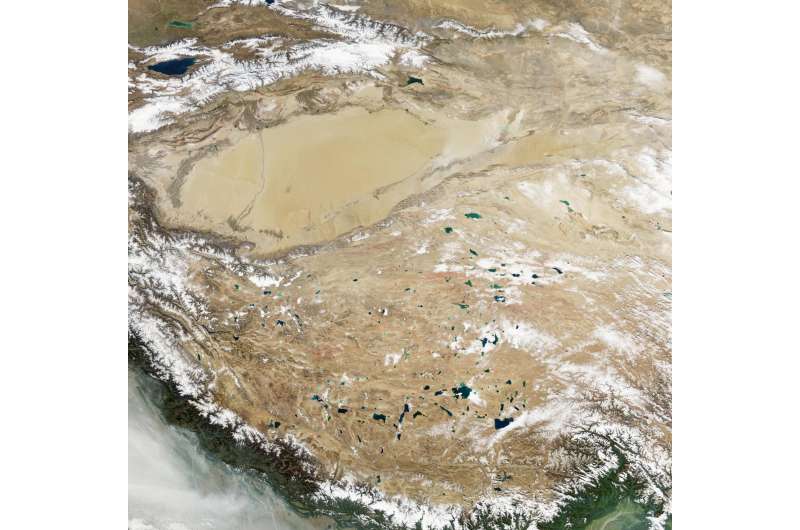Natural-colour satellite image of the Tibetan Plateau. Credit: NASA
A team of researchers affiliated with a host of institutions across China has found that a site on the Tibetan Plateau shows promise as a home for a next-generation large telescope. In their paper published in the journal Nature, the researchers describe features and attributes of the site that suggest it could provide a good setting for a next-generation telescope.
As the researchers note, sites for top-of-the-line telescopes are limited. In addition to providing a good view of the sky, such sites must have good weather, accessibility, political stability and clean air. In this new effort, the researchers have found a site that might fit the bill.
The site identified by the team is on the summit of Saishiteng Mountain, near a town called Lenghu, which is in China's Qinghai province. Potential altitudes range from 4,200 to 4,500 meters above sea level. The researchers note the site has a very dry climate, with remarkably clear skies. Testing to date has shown that the sky is clear at night approximately 70 percent of the time. The area also has relatively stable weather and does not vary dramatically in temperature.
The work has been going on for the past three years; China is eager to have a world-class next-generation telescope on their own soil. Officials have hinted that once built, their new telescope will have the largest aperture in the world, at 30 meters. To that end, the team has been scouring the country's terrain looking for good prospects, most of which involved sites on the Tibetan Plateau, one of the highest regions in the world.
The team also looked at historical data for the site near Lenghu and found that the town had on average 3,500 hours of sunshine each year. And in looking at data from equipment they set up on the site three years ago, they found that the area has very little atmospheric dust, little cloud cover and not much water vapor in the air. There was also very little air turbulence, and low likelihood of encroachment of man-made light sources in the future. They suggest that thus far, their study has shown the area to be on par with other sites where the best observatories in the world now reside.
More information: Licai Deng et al, Lenghu on the Tibetan Plateau as an astronomical observing site, Nature (2021). DOI: 10.1038/s41586-021-03711-z
Journal information: Nature
© 2021 Science X Network
























